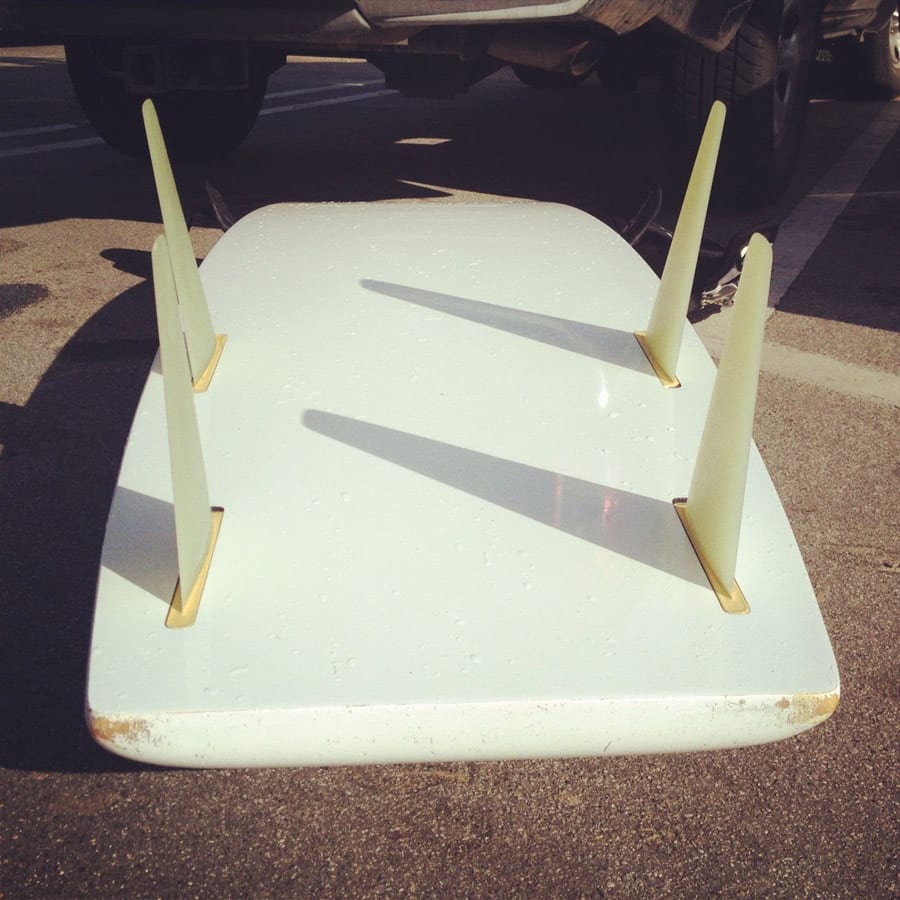By Paul Lang
After sitting down with some of the top kiteboarding racers to conduct The Kite Racer Interviews, I walked away more interested in kite racing and race boards than I’ve ever been in the past. I know a lot of other riders look at racing with at least a little bit of interest, so I’ve decided to write about my experiences as I learn to ride these wild course boards.
My Background
I had a strong sailing background before I learned to kiteboard and did a lot of sailboat racing, but when I learned to kiteboard I basically lost all interest in sailing. I’ve covered a lot of kiteboarding events that included racing and it’s always looked interesting to me, but not quite interesting enough to give it a try.
I’ve tried riding a few race boards over the past few years, but never with a serous goal of learning how to properly ride one. When I’ve tried them before, I’ve gone out, crashed a lot, decided it was hard, and moved on. I spend most of my time riding a surfboard looking for waves and I wasn’t sure how entertaining I would find riding a board that is made to go in a straight line.
My Gear
I’m lucky enough to get to ride a lot of different kites and my kite quiver seems to always be in a state of flux. At the moment I have a few Liquid Force Envys, a Wainman Hawaii Boss, and a Best Kahoona in my truck.

The race board I’ve ended up was given to me by Damien LeRoy. It’s a few seasons old and is not competitive compared to the current generation of boards. It was shaped by Alex Aguera and I believe it is a prototype of the CR53 model. It’s much more narrow than the latest boards and features a quad-fin setup instead of the tri-fin configuration on newer boards.
Basically, it looks nothing like any board I’ve ever had before. The rails are hard, the tail is square, and there is no rocker at all for at least half of the board. The fins I have are also outdated and are not nearly as long as the fins the current top racers are using. Even so, they look very long and sharp to me.
The First Day
I tried to ride this board for the first time on a light day at C-Street in Ventura on a 12m kite in 8-10 knots of wind. Without sugar coating it, I struggled. I assumed, foolishly, that since I’ve seen others ride race boards in super-low winds that I’d immediately be able to do the same.
I felt like I was back at the stage of learning how to ride a board for the first time. I know you’re supposed to ride a race board flat and ride on the fins, but that’s much more easily said than done. After a lot of struggling and a little swearing with a few brief moments of feeling like I was figuring it out, I ended up about a mile downwind and had to pack up and start the walk of shame back to my car.

The Second Day
After humiliating myself on the first try, I gave the race board another try the next day. This time I was at Ledbetter Beach in Santa Barbara in wind averaging around 10 knots. I took off from the beach and quickly found myself far downwind. It looked like I was in for a repeat of the first day and another long walk back.
Just when I was about to come in, the wind picked up just enough that I could make just a little progress back upwind. As I would pick up speed, I would do my best to hold the board flat and push on the fins as opposed to the rail of the board.
With the board flat, it feels like it takes off. The ride becomes smoother and more predictable and you can rocket upwind. Unfortunately, I found it difficult and tiring to hold the board in that position. I felt like I was pushing as hard as I could with the balls of my feet to keep the board flat and it wasn’t long until both legs were burning.
Even so, I stayed out for about two hours and did a few upwind/downwind laps. I was even able to pull off a few tacks. Tacking a race board feels very similar to taking a surfboard, but with the added complication of getting out of and back into foot straps. Jibing is a completely different story. Each jibe I tried ended with me in the water.

The wind during my second session. Definitely lighter than I usually go out in!
By the end of the session, I felt much more confident on the board and was really enjoying the sensation pushing on the board’s fins instead of the rail. I’ve got a long way to go, but after two sessions I’m already enjoying myself.
More to come after a few more race board sessions!
What I’ve Learned:
- This is hard and tiring! My legs feel like rubber after two sessions.
- The line between having enough wind to blast upwind versus barely able to go seems to be really fine.
- Avoid kelp. It makes you stop like hitting a rock on a skateboard.
- I need different foot straps! I installed straps I borrowed from twin tips, but they are designed to be used with a foot pad. They are too large and I feel like I’d be in more control with tighter straps.


